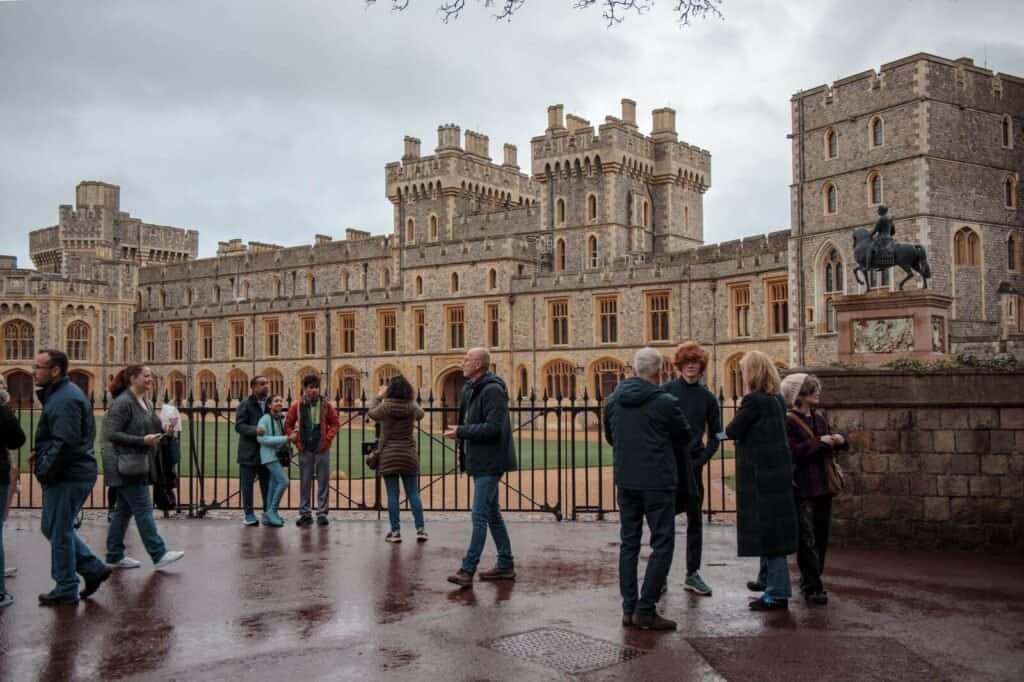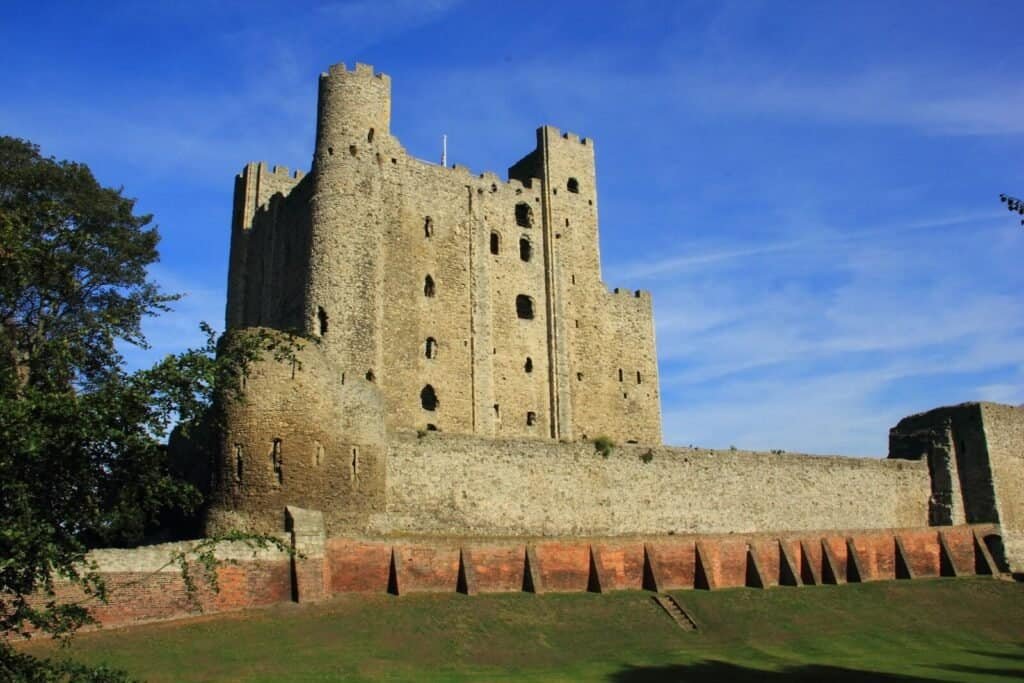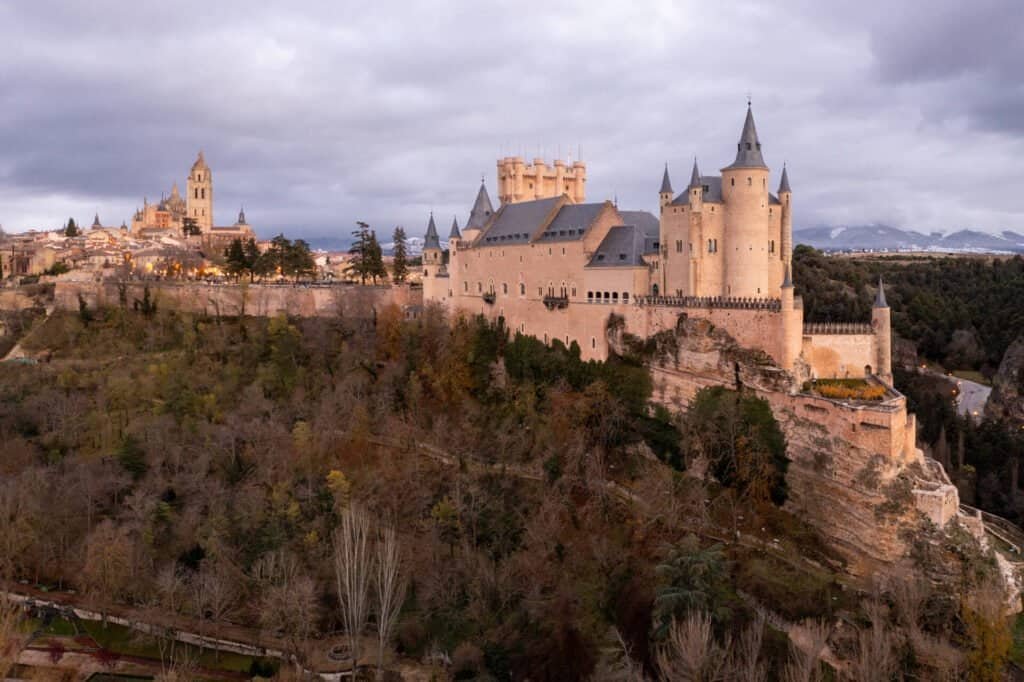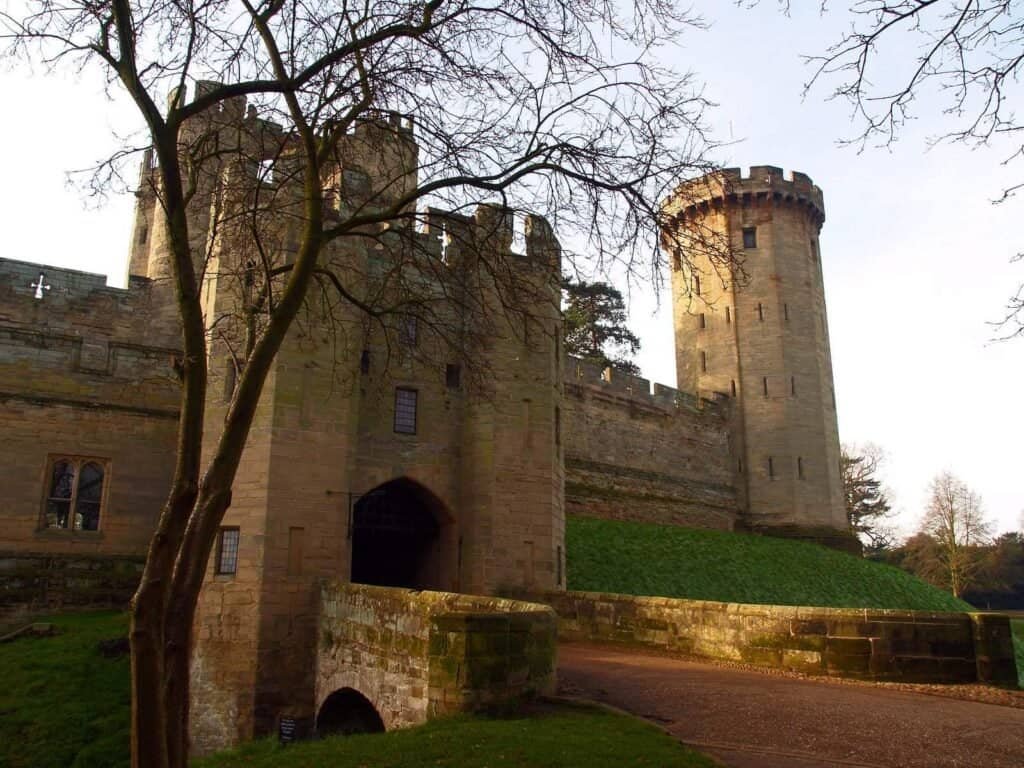Castles have always been emblematic of a bygone era, exuding an air of mystery and grandeur. They stand as silent witnesses to the turbulent history of humanity, showcasing the architectural prowess and strategic genius of their builders. In our quest for the oldest castles, we turn our attention to Europe, a continent adorned with some of the world’s most ancient and magnificent fortresses.
- Introduction
- Windsor Castle: A Medieval Icon
- Rochester Castle: A Norman Fortress
- Alcázar of Segovia: A Gothic Marvel
- Warwick Castle: A Living Heritage
- Prague Castle: An Ancient Wonder
- Conclusion
- FAQ
- Q: What are the oldest castles in Europe?
- Q: When were the oldest castles in Europe built?
- Q: Are the oldest castles in Europe open to the public?
- Q: Which of the oldest castles in Europe is a UNESCO World Heritage Site?
- Q: Who inhabited the oldest castles in Europe?
- Q: How long have the oldest castles in Europe been standing?
- Q: What can visitors expect when they visit the oldest castles in Europe?
- Q: How many of the oldest castles in Europe are still inhabited?
- Q: Where can the oldest castles in Europe be found?
- Q: What is the significance of the oldest castles in Europe?
Introduction
Europe is home to thousands of castles, each with its unique story and architectural style. The oldest of these have stood the test of time, bearing witness to the rise and fall of empires, the changing tides of warfare, and advancements in architectural design. In this guide, we will embark on a historical journey, exploring some of the oldest castles in Europe.
What is the Oldest Castle in Europe?
The title of the oldest castle in Europe is often subject to debate due to varying definitions of what constitutes a castle. However, many historians agree that the honor falls to the Tower of London in England, which was founded towards the end of 1066 as part of the Norman Conquest of England.
Significance of European Castles
European castles hold immense historical and cultural significance. They were built not only as defensive structures but also as seats of power, reflecting the wealth and status of their owners. Today, they provide invaluable insights into the political, social, and architectural developments of the medieval period and beyond.
Windsor Castle: A Medieval Icon
Our exploration commences with Windsor Castle, one of the oldest and largest inhabited castles in the world. This royal residence in England has been home to 39 monarchs and continues to serve as an official residence of the Queen.

History of Windsor Castle
William the Conqueror built Windsor Castle in the 11th century. Successive monarchs over the years expanded and remodelled it, reflecting the shifting architectural styles of various eras.
Construction and Design
The original castle was built with timber and later replaced with stone. It is a prime example of a motte-and-bailey castle, a design common in Norman England. The castle has a sizable central tower (the Keep) on a raised earthwork (the Motte), and a fortified enclosure (the Bailey) surrounds it.
Notable Features and Architecture
The architecture of Windsor Castle is an amalgamation of various styles, from Norman to Gothic. Notable features include the Round Tower, St. George’s Chapel, and the State Apartments, each showcasing different architectural periods. The castle’s immense size and imposing silhouette make it a distinct landmark.
Role as a Royal Residence
Windsor Castle has been a royal residence since its inception. It has hosted numerous state occasions and continues to be used for ceremonial and state functions. The castle also serves as a repository for a significant portion of the royal art collection.
Impact on European Castle Architecture
Windsor Castle greatly influenced European castle architecture due to its grandeur and evolving design, which incorporated the latest architectural trends. Its success led to the spread of the concentric castle design throughout Europe.
Rochester Castle: A Norman Fortress
Next on our journey is Rochester Castle, a formidable stone fortress in Kent, England. Built in the 12th century by William the Conqueror, it stands as one of the best-preserved examples of Norman architecture.

Origins and Construction of Rochester Castle
Rochester Castle was built strategically near London to guard an important crossing of the River Medway. The tallest stone tower in England later took the place of a wooden keep that served as the foundation for the building.
Norman Influence on Castle Design
The design of Rochester Castle reflects the strategic genius of the Normans. The castle boasts a massive square keep, a characteristic feature of Norman architecture. This design offered improved defensive capabilities and set the standard for future English castles.
Role in Medieval Warfare
Rochester Castle played a crucial role in medieval warfare, enduring numerous sieges. Its massive walls and strategic location made it a formidable defense structure. The castle’s history of warfare is a testament to the strategic importance of castles during the Middle Ages.
Notable Events and Figures Associated with Rochester Castle
Rochester Castle has been associated with several historical events and figures. It was besieged three times, most notably during the reign of King John in 1215. This siege resulted in significant damage to the castle, leading to extensive repairs and modifications.
Alcázar of Segovia: A Gothic Marvel
Spain’s Alcázar of Segovia, an enchanting castle with a fairytale-like appearance, is our next stop. Famous for its distinctive shape resembling the bow of a ship, the Alcázar is one of the most distinctive castles in Spain.

History and Architecture of the Alcázar of Segovia
The Alcázar’s history dates back to Roman times, but its current form took shape in the 12th century. Over the centuries, it served various roles, from a royal palace and state prison to a military academy. It is now a museum and a UNESCO World Heritage Site.
Transition from Fortress to Royal Residence
The Alcázar’s transition from a fortress to a royal residence led to significant architectural changes. The castle was embellished with decorative elements, transforming it into a grand royal palace. Its transformation reflects the evolution of castles from purely defensive structures to symbols of power and prestige.
Gothic Elements and Influence
The Alcázar exhibits Gothic architectural elements, including pointed arches and ribbed vaults. Its design influenced other European castles, particularly in Spain, where it became a model for castle construction.
Cultural Significance and Tourism
The Alcázar of Segovia is a cultural icon and a popular tourist attraction. Its rich history and architectural beauty attract millions of visitors each year, contributing significantly to Spain’s cultural tourism.
Warwick Castle: A Living Heritage
Our next destination is Warwick Castle, a living testament to medieval history in England. This magnificent castle has witnessed centuries of political intrigue, warfare, and architectural evolution.

Evolution of Warwick Castle
Warwick Castle has its roots in the Norman era, with the original wooden motte-and-bailey castle dating back to 1068. Over the centuries, it underwent various expansions and transformations, reflecting the changing needs and tastes of its owners.
Norman Origins and Expansion
The Norman influence is evident in the initial design of Warwick Castle. It featured a central keep on a raised mound surrounded by a fortified enclosure. Subsequent additions, including the construction of stone walls and towers, expanded the castle’s defensive capabilities.
Transformation into a Grand Medieval Fortress
During the medieval period, Warwick Castle underwent significant enhancements, transforming it into a grand fortress. The construction of the Caesar’s Tower and the Gatehouse fortified the castle, making it an imposing stronghold.
Renaissance and Modern Additions
In the Renaissance period, Warwick Castle underwent further modifications, incorporating more luxurious elements into its design. Later, during the Victorian era, the castle was renovated and restored by architect Anthony Salvin, who aimed to create a picturesque medieval castle.
Role as a Tourist Attraction and Historical Site
Today, Warwick Castle stands as a popular tourist attraction, offering visitors an immersive experience into medieval life. The castle hosts various events, such as jousting tournaments and historical reenactments, allowing visitors to step back in time.
Prague Castle: An Ancient Wonder
Our final destination is Prague Castle, a sprawling complex that has witnessed centuries of history in the heart of the Czech Republic. This architectural marvel is not only one of the oldest castles in Europe but also the largest ancient castle complex in the world.
Origins and Development of Prague Castle
Prague Castle has a rich history dating back to the 9th century. The oldest parts of the castle, such as the Romanesque Basilica of St. George, provide glimpses into its early origins. Over the centuries, Prague Castle underwent extensive expansions and renovations, reflecting various architectural styles.
Oldest Parts and Architectural Styles
The oldest surviving part of Prague Castle is the Romanesque-style Basilica of St. George, built in the 10th century. The castle complex also features Gothic, Renaissance, and Baroque elements, showcasing the architectural influences and tastes of different eras.
Notable Buildings and Features within Prague Castle
Prague Castle encompasses numerous buildings and landmarks, each with its unique significance. The stunning St. Vitus Cathedral, the Old Royal Palace, and the Golden Lane are among the notable structures that captivate visitors with their architectural beauty and historical importance.
Cultural and Historical Significance
Prague Castle holds immense cultural and historical significance for the Czech people. It has served as the seat of power for kings, emperors, and presidents throughout history, symbolizing the country’s sovereignty and heritage. The castle is also closely associated with the rich folklore and legends of the Czech Republic.
Visitor Experience and Highlights
Exploring Prague Castle offers visitors a glimpse into the past. The castle complex offers breathtaking panoramic views of the city, and guided tours provide insights into the castle’s history, art collections, and architectural splendor. Visitors can also witness the famous changing of the guard ceremony.
Conclusion
Exploring Europe’s oldest castles is a journey through time, revealing the diverse architectural styles, historical events, and cultural significance associated with these majestic structures. From the Tower of London to Prague Castle, each castle offers a unique narrative, captivating visitors with its grandeur and rich heritage. Preserving and appreciating these castles is not only important for their historical value but also for understanding the intricate tapestry of European history.
Exploring Europe’s Oldest Castles
The oldest castles in Europe stand as testaments to the ingenuity and resilience of their builders. They offer a glimpse into a bygone era and provide valuable insights into the history and culture of the continent. Exploring these ancient fortresses allows us to connect with our past and gain a deeper understanding of our shared heritage.
Preserving and Appreciating Castle Heritage
Preserving and appreciating the heritage of European castles is vital to ensure that future generations can continue to experience the beauty and historical significance of these architectural wonders. Governments, organizations, and individuals play a crucial role in maintaining and protecting these castles, allowing them to thrive as cultural treasures and educational resources.
FAQ
Q: What are the oldest castles in Europe?
A: Some of the oldest castles in Europe include Hohensalzburg Castle, Windsor Castle in England, Cochem Castle, and Killyleagh Castle, among others.
Q: When were the oldest castles in Europe built?
A: The oldest castles in Europe were built between the 11th and 13th centuries, during the medieval period.
Q: Are the oldest castles in Europe open to the public?
A: Yes, many of the oldest castles in Europe, such as Hohensalzburg Castle, Cochem Castle, and Windsor Castle, are open to the public for tours and visits.
Q: Which of the oldest castles in Europe is a UNESCO World Heritage Site?
A: Hohensalzburg Castle is listed as a UNESCO World Heritage Site, making it one of the oldest and largest castles in Europe to receive such recognition.
Q: Who inhabited the oldest castles in Europe?
A: Various royal families, nobles, and historical figures have inhabited the oldest castles in Europe, including William the Conqueror at Windsor Castle in England.
Q: How long have the oldest castles in Europe been standing?
A: Many of the oldest castles in Europe, such as Cochem Castle and Killyleagh Castle, are still standing today, showcasing their enduring medieval architecture.
Q: What can visitors expect when they visit the oldest castles in Europe?
A: Visitors can expect to explore the historical grounds, experience medieval architecture, and learn about the rich history of these castles, some of which also host events and exhibitions.
Q: How many of the oldest castles in Europe are still inhabited?
A: Some of the oldest castles in Europe, like Windsor Castle in England and Killyleagh Castle, are still inhabited and are among the longest-occupied palaces in Europe.
Q: Where can the oldest castles in Europe be found?
A: The oldest castles in Europe are located in various countries and regions, including Austria, England, Germany, and Northern Ireland, offering a wide range of historical sites for visitors to explore.
Q: What is the significance of the oldest castles in Europe?
A: The oldest castles in Europe hold great historical and cultural significance, serving as important tourist attractions and preserving the medieval heritage of the region, with some being recognized as UNESCO World Heritage Sites.